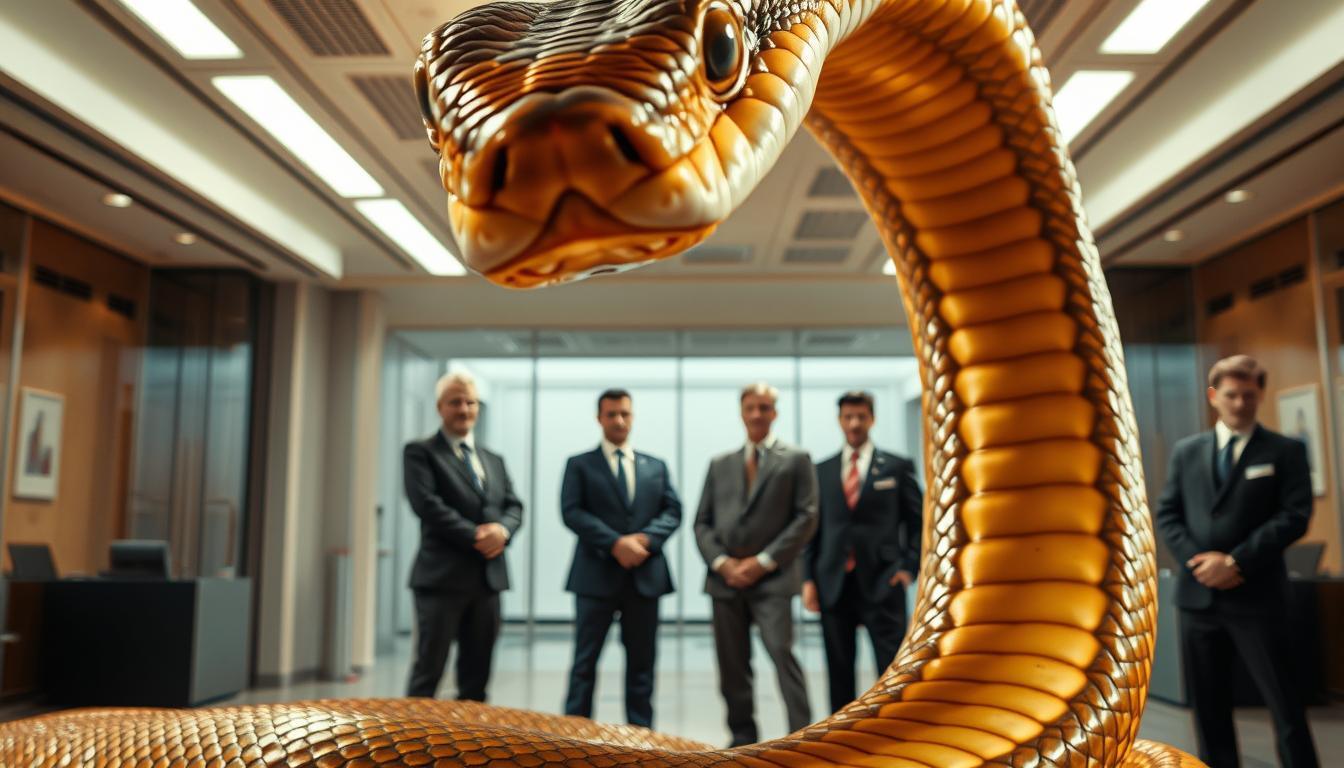The signaling theory mental model shows how we share hidden qualities through our actions. For example, wearing a nice suit to an interview or sharing travel photos online. These actions tell others about our skills, status, or trustworthiness.
This idea comes from evolutionary biology, economics, and social psychology. It was first used to explain how animals attract mates or scare off predators. Now, it helps us understand everything from job resumes to dating profiles.
Signals are important because they affect our choices. They decide who we hire, trust, date, or admire. Some signals, like getting a degree or starting a brand, are expensive. Others, like body language or how we speak, are subtle but strong.
Knowing this model helps us send clearer, more true messages. It also helps us not misunderstand others. For those dealing with complex relationships or important talks, this model is very useful.
It’s a way to be clear in a world where looks can mean more than words.
Key Takeaways
- Signaling theory mental model: Visible actions often reveal hidden traits like trustworthiness or expertise
- Signals influence decisions in relationships, careers, and consumer choices
- Misreading cues can lead to inaccurate judgments about people
- Self-awareness helps you send clearer, more authentic signals
- Practical applications range from networking to personal branding
Introduction to Social Signaling and Mental Models
Why do we choose specific outfits for job interviews or carefully craft dating app bios? These everyday choices act as social signals—visible clues that hint at deeper qualities in a person’s life.
A crisp suit might suggest professionalism, while volunteer work in a profile could imply compassion. This is part of the brain’s system for interpreting social cues. What we show often reveals what we value.
Defining Visible Cues and Hidden Traits
Visible cues are tangible actions: how someone speaks, dresses, or interacts online. Hidden traits—like integrity or expertise—stay beneath the surface. Think of a coworker who consistently meets deadlines. Their punctuality (visible) points to reliability (hidden), building trust without direct claims.
The Importance of Mental Models in Decision-Making
Our brains use mental frameworks to process social information quickly. Like a chef’s knife simplifying meal prep, these models help us focus on core details. They filter out noise—ignoring a stranger’s mismatched socks to notice their confident handshake instead.
One key principle? The map isn’t the territory. Our mental shortcuts don’t capture full reality in life, but they help navigate complex relationships between people. Recognizing this gap prevents misjudging others based on limited information and psychological data.
The Historical Evolution of Signaling Theory Model

What began as observations of peacock feathers and firefly flashes transformed how we understand human behavior. Early researchers noticed animals use vivid displays to share critical information—like health or mating potential—without direct communication.
Michael Spence’s Education Revelation
In 1973, economist Michael Spence uncovered a pattern: job seekers with college degrees earned higher salaries even when their roles didn’t require specific knowledge. His research showed diplomas act as proof of persistence—a costly signal separating dedicated workers from others. This discovery earned him a Nobel Prize and reshaped hiring practices worldwide.
The Signaling Theory Mental Model: From Labs to Living Rooms
What started in biology labs soon explained everyday choices. Brands began using premium packaging to signal quality. Dating profiles highlighted hobbies to suggest personality traits. The table below shows how signals evolved across species and societies:
| Signal Type | Animal Example | Human Equivalent |
|---|---|---|
| Costly Display | Peacock’s tail | Luxury car purchase |
| Skill Demonstration | Bird nest building | Portfolio showcases |
| Group Membership | Bee dance patterns | Corporate dress codes |
This system works because effective signals demand effort. Just as fireflies invest energy in bright flashes, people commit time to education or skill development. These investments create trust—giving senders an advantage and helping receivers make faster decisions.
Understanding the Signaling Theory Mental Model
Consider how a simple smile can convey confidence before a single word is spoken. This silent exchange illustrates a universal truth: our actions speak volumes about who we are as a person.
Every choice- from how we dress to how we listen sends ripples through our systems of communication, providing valuable information that can test our psychological advantage in social interactions.
Core Principles and Theoretical Foundations
At its heart, this approach operates like a conversation. Senders craft visible cues—a firm handshake, a polished resume—to share hidden qualities. Receivers decode these signals through filters shaped by experience and context. Both parties gain when messages align with reality.
Two rules define authentic communication. First, actions must aim to inform, not mislead. Second, both sides should benefit—like a chef using fresh ingredients (signal) to attract diners seeking quality (receiver). This mutual value separates meaningful gestures from empty noise.
Your brain processes these exchanges on dual tracks. Conscious analysis evaluates a job candidate’s qualifications, while instinct notes their eye contact. Context shifts meanings: crossed arms might signal focus in a boardroom but discomfort at a café.
Mastering this system requires adaptability. A startup founder pitching investors emphasizes different strengths than when mentoring interns. Success lies in matching your signals to what others need to see.
These principles form a roadmap for clearer connections. By understanding the hidden rules shaping our daily exchanges, you can navigate relationships with greater intention and insight.
Misleading Signals and the Cost of Inauthenticity

Not all signals are truthful. Sometimes, people or brands send fake cues to impress. These misleading signals can harm trust, damage reputations, or lead to bad choices.
A luxury car might look like a sign of wealth, but it could be too expensive. In dating, someone might show off adventurous photos but hide their true feelings. In business, fake credentials on resumes can get you fired.
The signaling theory mental model says authenticity wins long-term. Signals that cost effort or sacrifice are harder to fake and more reliable. Knowing about false cues helps you make better choices. It encourages you to be honest and true to yourself.
Visible Cues and Hidden Traits: A Closer Look

How do we decide who to trust in a crowded room? Our brains, as part of complex psychological systems, instinctively weigh visible actions against invisible qualities.
A sharp question during a meeting might reveal critical thinking, while remembering a colleague’s coffee order could hint at the emotional level of attentiveness that humans often display.
Signals of Intelligence, Loyalty, and Wealth
Intelligence often shows through problem-solving approaches, not just test scores. Someone asking clarifying questions during complex discussions signals curiosity—a key marker of adaptable thinking. Loyalty surfaces in small acts: returning borrowed items promptly or defending team members during challenges.
Wealth displays have evolved beyond flashy cars. Flexible schedules suggest control over time—a modern status symbol. Curated book collections or niche hobbies can signal both resources and depth. These subtle markers often speak louder than obvious ones.
The Role of Costly Signals in Establishing Credibility
True credibility requires investment. Animal behavior research shows why unpaid internships or advanced degrees build trust—they demand sacrifice. Like peacocks growing elaborate tails, these choices prove commitment through effort.
Consider two job candidates: one lists certifications, the other demonstrates skills through volunteer projects. The latter often appears more authentic because their actions required initiative. This principle applies everywhere—from relationships to retail choices.
Effective communication balances visibility with authenticity. A handmade gift often carries more meaning than expensive jewelry. By aligning your actions with genuine capabilities, you create signals that resonate without straining resources.
The signaling theory mental model and the Skin in the Game mental model go hand in hand. Signals show effort and investment, while Skin in the Game shows the risks taken to prove commitment. This combination shows that credibility is earned, not claimed.
Application in Educational and Professional Settings
The workplace operates like a silent theater—every action sends cues about capability and character. From diplomas framed on walls to the precision of a resume’s bullet points, these markers shape opportunities before conversations begin.
Each individual’s expression of their skills can support their professional journey, while avoidance of genuine effort may hinder progress.
College Degrees as Indicators of Ability
Education credentials often reveal more about discipline than expertise. A 2020 study found employers view degrees as proof of persistence—the stamina to complete multi-year commitments. This explains why philosophy majors land tech roles and biology graduates thrive in finance. The degree itself signals adaptability to structured systems.
The Impact of Professional Attire and Resume Language
First impressions form in seconds. Stanford researchers discovered resumes emphasizing grit—like “overcame budget constraints” or “led 18-month initiative”—received 27% more interviews. Similarly, tailored suits or polished shoes convey attention to detail before introductions.
| Resume Element | Signal Sent | Impact |
|---|---|---|
| Action Verbs | Proactive Approach | 42% Higher Callback Rate |
| Quantified Achievements | Measurable Impact | Trust in Competence |
| Persistence Narratives | Long-Term Commitment | Alignment with Company Goals |
Hiring managers use these patterns as shortcuts. When evaluating 100+ applications, signals like clean formatting or industry-specific jargon help filter candidates quickly. Studies show 75% of hiring decisions solidify within the first 7 minutes of interaction.
To stand out, align your signals with the role’s unspoken needs. A startup might value casual wear demonstrating flexibility, while a law firm expects tailored attire reflecting precision. Match your visible choices to the beliefs your audience values most.
This is also where the Status Quo Mental Model comes into play. Hiring managers often favor familiar signals—like traditional degrees—over less conventional but equally capable paths. Understanding both models helps break free from surface-level assumptions.
Real-World Impacts of Signaling in Dating and Relationships

Modern dating profiles function like interactive storefronts—every element whispers clues about who we are and our individual expression in various environments. Research findings reveal 92% of users decide to swipe left or right within 7 seconds, guided by split-second judgments of visible cues and their responses to subtle signals.
Enhancing Profiles with Photos and Personal Hobbies
A hiking photo does more than show scenery—it suggests energy and adventure-seeking. Profiles featuring pets receive 35% more matches, as animals subtly communicate nurturing capacity. Book collections or museum visits in backgrounds often correlate with higher conversation rates among users valuing intellectual connection.
How Pets and Books Signal Warmth and Intelligence
Cat owners might attract partners valuing independence, while dog photos emphasize social warmth. Displaying nonfiction titles signals curiosity, whereas fiction preferences hint at creativity. These visual shortcuts help people assess compatibility before exchanging messages.
Our brains instinctively scan for approval cues in profiles. A genuine smile activates mirror neurons, creating feelings of trust. Group photos showing laughter suggest social skills, while solo travel images highlight self-reliance.
However, ambiguous expressions often get interpreted negatively—a biological survival mechanism.
Want to attract partners valuing growth? Highlight learning-oriented hobbies like cooking classes or language apps. Seeking adventure? Feature rock-climbing shots or festival experiences.
Authenticity matters most—forced signals create mismatches that surface quickly in real-life interactions.
Branding and Corporate Signaling Strategies
What makes you choose one brand over another when products seem similar? Behind every purchase lies unspoken conversations between companies and individuals, influenced by emotional psychology and various factors. Brands constantly communicate through their actions, not just ads to build trust and loyalty with their customers.
Patagonia’s Environmental Stance and Loyal Customer Base
Outdoor retailer Patagonia made headlines by donating 1% of sales to environmental causes since 1985. This wasn’t marketing, it became their identity. Their “Don’t Buy This Jacket” campaign urged conscious consumption, paradoxically boosting sales 30% among eco-conscious shoppers. Why? Their actions matched stated values, creating signals others perceive as authentic.
Apple’s clean product designs and premium pricing send different cues. Sleek aluminum unibodies signal innovation, while higher costs imply exclusivity. Customers paying more feel they’re investing in cutting-edge tools, not just gadgets.
| Brand | Signal Type | Customer Perception |
|---|---|---|
| Patagonia | Environmental activism | Shared values advocate |
| Apple | Minimalist design | Tech innovator |
| Local Coffee Shop | Reusable cup discounts | Community partner |
Small businesses can mirror this. A bakery sourcing local ingredients signals freshness while supporting farmers. A consultant sharing free resources demonstrates expertise before pitching services. These choices create advantage by aligning with what specific groups value.
Next time you shop, ask: “What story is this brand telling through its actions?” Look beyond slogans to changes they’ve implemented. Authentic support for causes often reveals deeper priorities than any ad could.
Interpersonal Interactions and Everyday Social Signaling

Every conversation holds layers of unspoken messages waiting to be decoded. Our bodies shift, eyebrows lift, and voices soften—all signals others interpret instinctively. Research shows 93% of meaning in casual exchanges comes from nonverbal cues rather than spoken words, highlighting the psychology behind these interactions.
Understanding the differences in emotional expressions can help navigate potential conflict in relationships.
Recognizing and Sending Clear Social Cues
Notice how people angle their feet during discussions. Pointed toward you? Likely engagement. Turned toward exits? Subtle readiness to leave. These micro-signals flow constantly—a raised coffee cup interrupting a sentence might signal urgency, while prolonged eye contact often shows trust.
| Common Cue | Signal Sent | Pro Tip |
|---|---|---|
| Leaning forward | Active interest | Mirror posture to build rapport |
| Crossed arms | Defensiveness | Offer space before continuing |
| Quicker speech | Excitement/stress | Match energy levels carefully |
Cultural context reshapes interpretations. Nodding means agreement in New York but might signal polite listening in Tokyo. When working with global teams, test assumptions by asking clarifying questions like, “How does this approach feel for you?”
Your blinking patterns and response timing send messages too. Pausing two seconds before replying can convey thoughtfulness—but stretch to four, and others might perceive hesitation. Practice recording mock conversations to spot unconscious habits affecting your interactions.
Three steps sharpen signal awareness: 1) Observe clusters of cues rather than single gestures 2) Note mismatches between words and body language 3) Adjust your own signals like lowering vocal pitch during serious discussions. Small tweaks create clearer communication pathways in daily life.
Neuroscience Perspectives on Social Signaling
Ever notice how your behavior shifts when someone’s watching? Science shows our brains light up differently under observation. Specific regions activate like backstage crew managing reputation and social awareness.
This explains why we instinctively stand straighter during presentations or choose kinder words in group settings.
Second-Person Neuroscience and Audience Effects
Recent neuroscience research reveals three key areas—medial prefrontal cortex, anterior cingulate, and temporoparietal junction—that fire up when we feel observed. These zones handle social thinking and self-image control. It’s why people donate more to charity when others can see their choices.
Digital Surveillance and Behavioral Shifts
Every click, scroll, and pause online sends a signal. It’s not just to people, but to algorithms too. These platforms collect behavioral data to shape what we see. They use algorithmic feedback loops to reinforce patterns.
This feedback subtly nudges how we present ourselves online. Liking motivational posts or following fitness accounts may lead to more of the same. It shapes our digital identity.
Neuroscience shows we alter behavior when observed. Online surveillance triggers similar brain responses tied to reputation management.
Understanding this helps us stay intentional. Even passive actions online send signals. Sometimes, they’re stronger than words.
Brain Activity Patterns During Social Interactions
Face-to-face conversations activate mirror neurons, creating unconscious synchronization. You might lean forward when others do or match their speech pace. Stress hormones like cortisol can disrupt this delicate dance, making social cues harder to read. Deep breathing before meetings helps maintain clear communication channels.
Practical takeaway? Treat high-stakes interactions like tuning a radio. Reduce mental static through preparation, then focus on the signals you want to send and receive. Small adjustments—like maintaining open posture—help your brain’s social system work smoothly with others.
Conclusion
Learning about the signaling theory mental model can change how we connect with others. It’s useful in networking, hiring, dating, or managing a brand.
Your actions speak louder than words, showing who you really are.
Signals are not just about what we say. They’re also about our choices, consistency, and presence. Being mindful of these signals can help us build trust and make better decisions.
It’s all about being true to ourselves and others.
Want to explore more ways mental models shape our thinking? Check out our articles on Confirmation Bias and the First Impressions mental model. They can help deepen your strategic decision-making.


